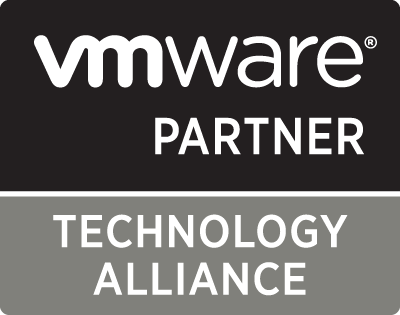oVirt VS VMware: How to Choose and Migrate VM?
2023-09-08 | Iris Lee
For decades, virtualization has swept businesses around the world because of its ability to increase overall agility and save costs in the operation of mission-critical IT systems.
Red Hat is one of the most prominent representatives regarding Linux and has significantly impacted the development of Open Source. However, Red Hat published a life cycle page for Red Hat Virtualization 4.4 will reach end of life in 2026. This decision means that clients have to relocate their RHV tasks to another option, in a market that is undergoing significant changes.
The virtualization market is becoming more diverse as vendors offer complete solutions from different hypervisors, helping enterprise users with different business requirements get what they want most.
Among them, VMware is the most popular one with the largest market share. It stands out for its maturely developed product suite, VMware vSphere, which can help companies solve almost any problem with the full feature set it offers. On the other hand, oVirt is a rising star in the field of open source virtualization, favored by many startups and developers who want more freedom in their project implementation. If you are vacillating between these two well-known platforms and don’t know how to choose, I hope this article can help you.
What is oVirt?
oVirt is a free, open-source virtualization management platform. It was founded by Red Hat as a community project on which Red Hat Virtualization is based. It allows centralized management of virtual machines, compute, storage and networking resources, from an easy-to-use web-based front-end with platform independent access. KVM on x86-64, PowerPC64 and s390x architecture are the only hypervisors supported, but there is an ongoing effort to support ARM architecture in a future releases.
What is VMware vSphere?
VMware is a global leader in virtualization and cloud infrastructure solutions, founded in 1998. The company develops a wide range of software and services that enable businesses to create, manage, and run virtual machines (VMs) on a single physical server or across multiple servers. These VMs can host different operating systems and applications, which allows for better hardware utilization, simplified management, and increased flexibility.
VMware’s flagship product is VMware vSphere, which consists of two main components:
VMware ESXi: ESXi is a Type-1 hypervisor that provides the foundation for virtualization. It is installed directly on the physical server and acts as a platform for creating and managing VMs. ESXi is responsible for allocating hardware resources, such as CPU, memory, and storage, to each VM while maintaining isolation between them.
VMware vCenter Server: vCenter Server is a centralized management solution that enables the administration of multiple ESXi hosts and their respective VMs from a single interface. It offers features such as VM provisioning, performance monitoring, high availability, and disaster recovery.
Comparison between oVirt and VMware
oVirt and VMware are both virtualization platforms that provide similar functionalities, but they have some differences in terms of architecture, licensing, and market positioning. Here's a comparison of oVirt and VMware:
oVirt | VMware | |
Architecture | oVirt engine and oVirt node. oVirt is built upon several other projects including libvirt, Gluster, PatternFly, and Ansible. | Its bare-metal hypervisor ESX/ESXi in x86 architecture. |
Hypervisor | Based on KVM | ESXi (formerly known as VMware ESX) |
Licensing | Open-source project released under the Apache License | Proprietary, requires a paid license The licensing costs depend on the edition and the number of CPU sockets or cores.
|
High Availability | Support | Support |
Operating system supported |
|
|
Storage |
|
|
Feature set |
|
|
Management Interface | Web-based management interface called the oVirt Engine | VMware vSphere offers the vCenter Server as the central management interface |
Market Positioning | oVirt is often used by organizations looking for an open-source, cost-effective virtualization solution. It is popular among small and medium-sized businesses and community-driven projects.
| VMware has a mature ecosystem and extensive integration with enterprise-grade solutions. It offers a wide range of management tools, monitoring solutions, and third-party integrations. VMware also provides additional products like vRealize Suite for cloud management and automation.
|
Community and Support | oVirt has an active and growing community of users and contributors. | VMware has a large and well-established community of users and professionals as well as a network of certified partners who provide additional support and consulting services.
|
It's important to note that while oVirt and VMware have different levels of support for various platforms, VMware's broader support and compatibility stem from its extensive market presence and maturity in the virtualization space. Ultimately, the choice of platform depends on the specific requirements, existing infrastructure, and preferences of the organization or individual deploying the virtualization solution.
Overall, oVirt and VMware provide virtualization solutions with similar core functionalities but differ in terms of many aspects. The choice between them depends on factors such as budget, scalability requirements, support needs, and the preference for open-source or commercial solutions.
P.S. Because Red Hat is one of the major contributors of oVirt, some users worry about that the performance of the later versions of oVirt after Red Hat reduce contribution to this project.
Protect and migrate your virtual machine With Vinchin Backup & Recovery
Although its end of life is in 2026, organizations with large-scale infrastructure and small-medium businesses using RHEV should consider moving VMs to other platforms in a trickle or big-bang migration fashion.
Vinchin Backup & Recovery can migrate VMs across 10+ virtual platforms including VMware, XenServer, and most KVM-based hypervisors. You can easily switch your critical modern IT workloads from one to another to build your own highly flexible IT infrastructure.
With Vinchin Backup & Recovery, whether a new virtual platform is needed for better IT operations or disaster recovery, you can easily store data in different locations including on-premises, offsite and clouds, and quickly migrate it to any VM you want.
To get cross-platform recovery done with Vinchin Backup & Recovery only need simple few steps:
Back up your VMs from Virtual Platform A with Vinchin Backup & Recovery.
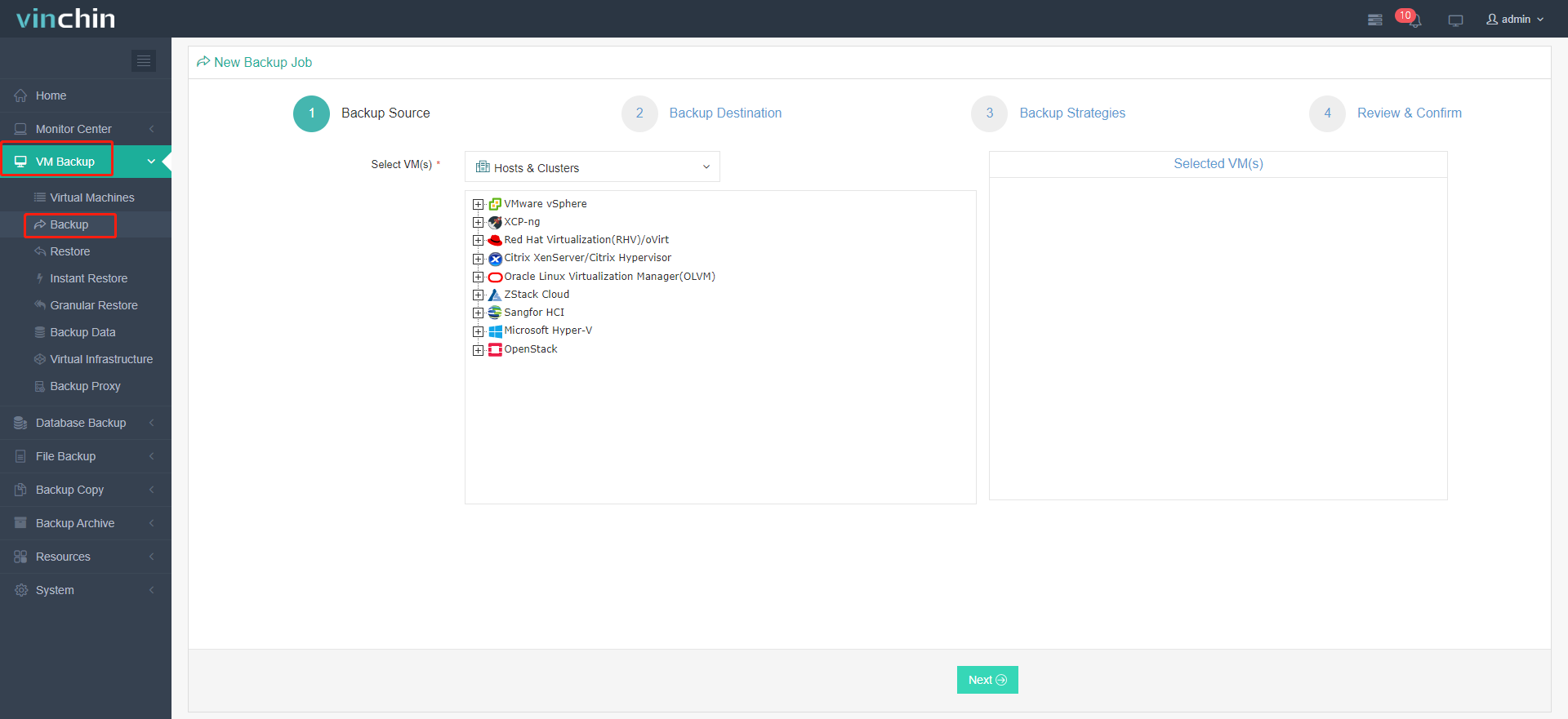
Select a desired restore point of any VM you wish to recover to Virtual Platform B.
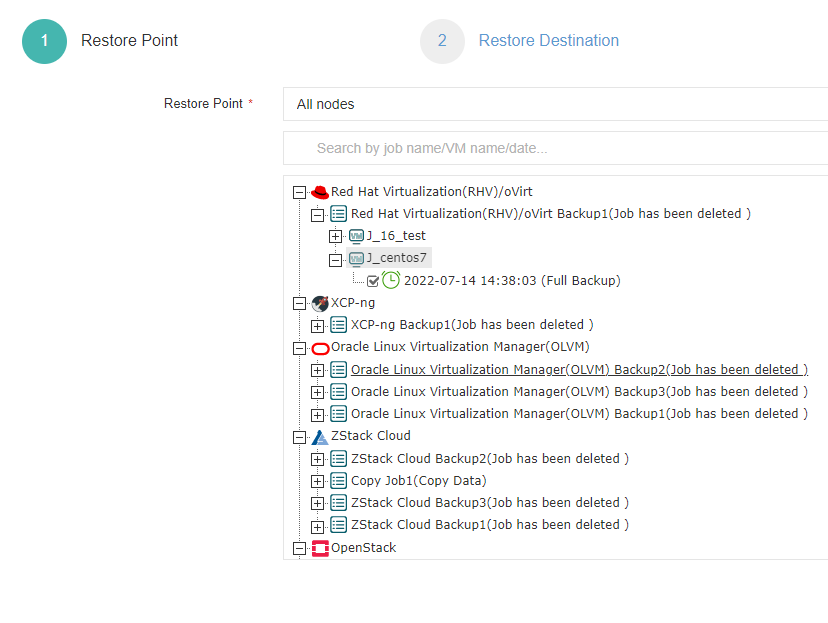
Set Virtual Platform B as recovery destination.
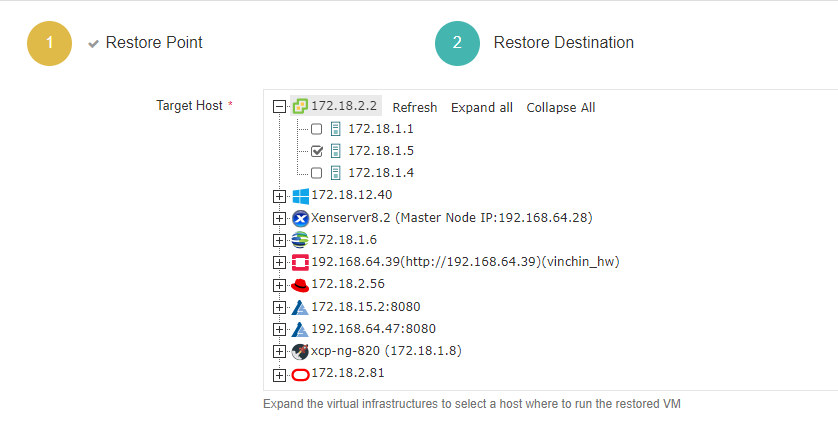
Customize recovery strategies with simple clicks if needed.
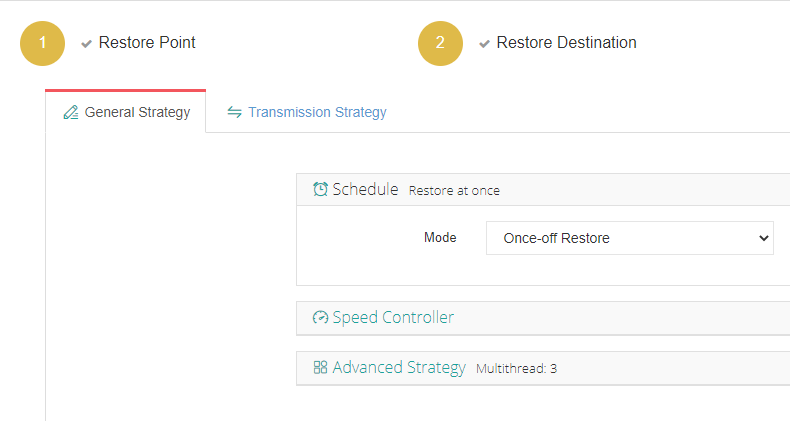
Review your configurations and submit the recovery job.
Original VM recovered and up running on Virtual Platform B.
There is a 60-day free trial with all features unlocked, come on and have a try!
Sum Up
Both oVirt and VMware vSphere are premium virtualization solutions for enterprises. VMware vSphere is more popular because of its well-rounded performance and oVirt also has its advantages because it is open-source and has a cheaper price.
To protect your virtual environment, you can select the professional backup solution Vinchin Backup & Recovery and it could also help migrate to new virtual environment.
Share on:
 English
English













